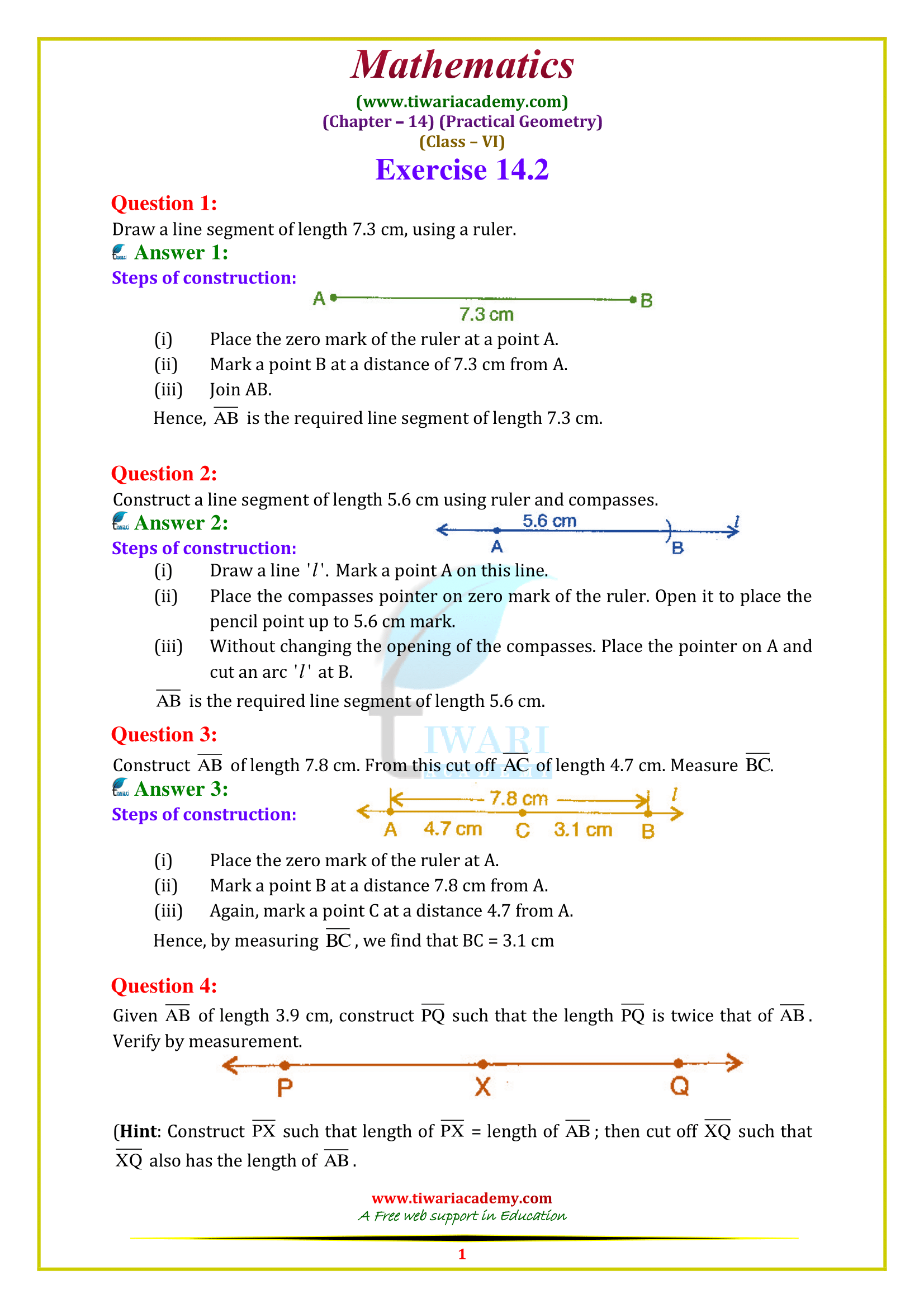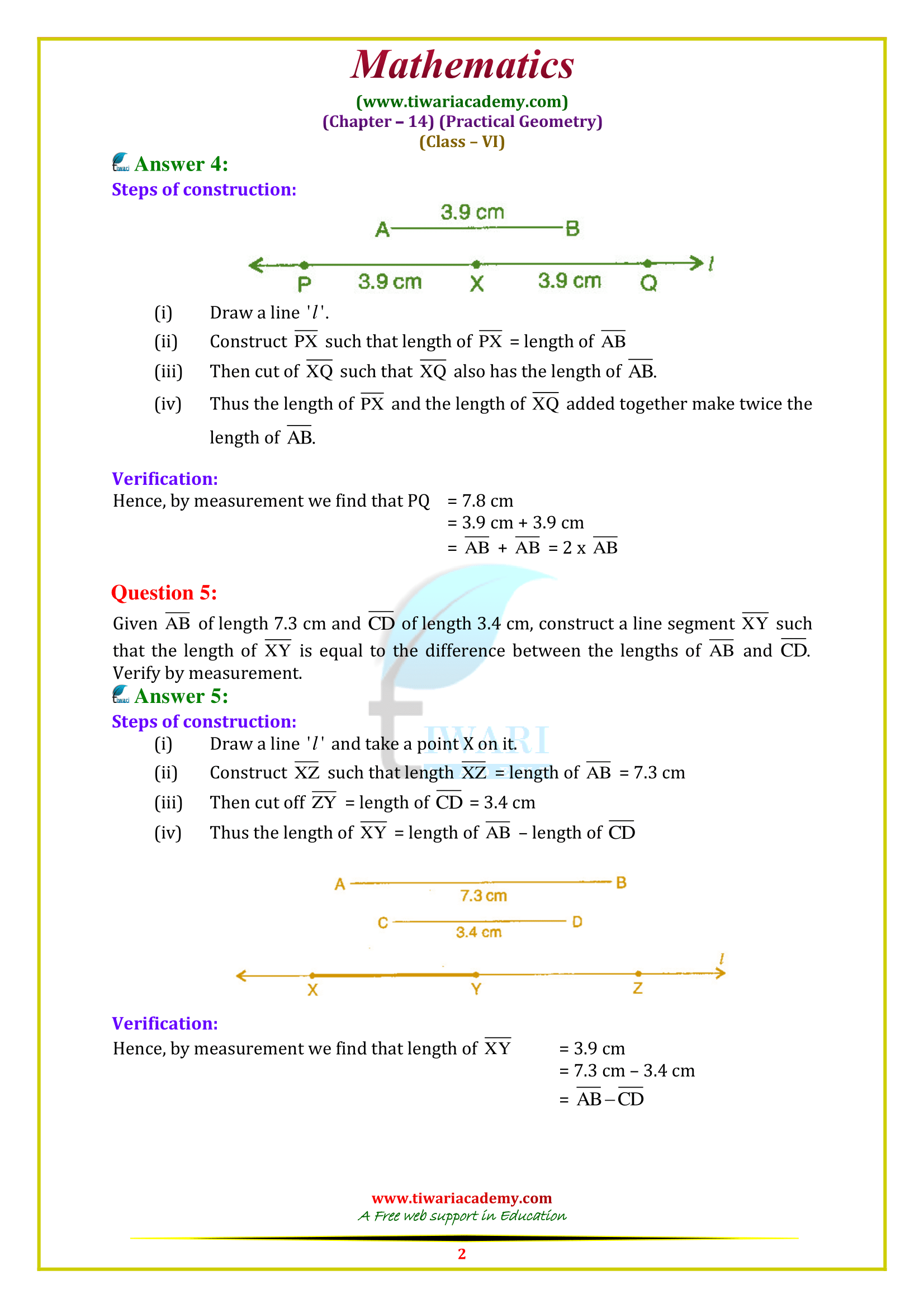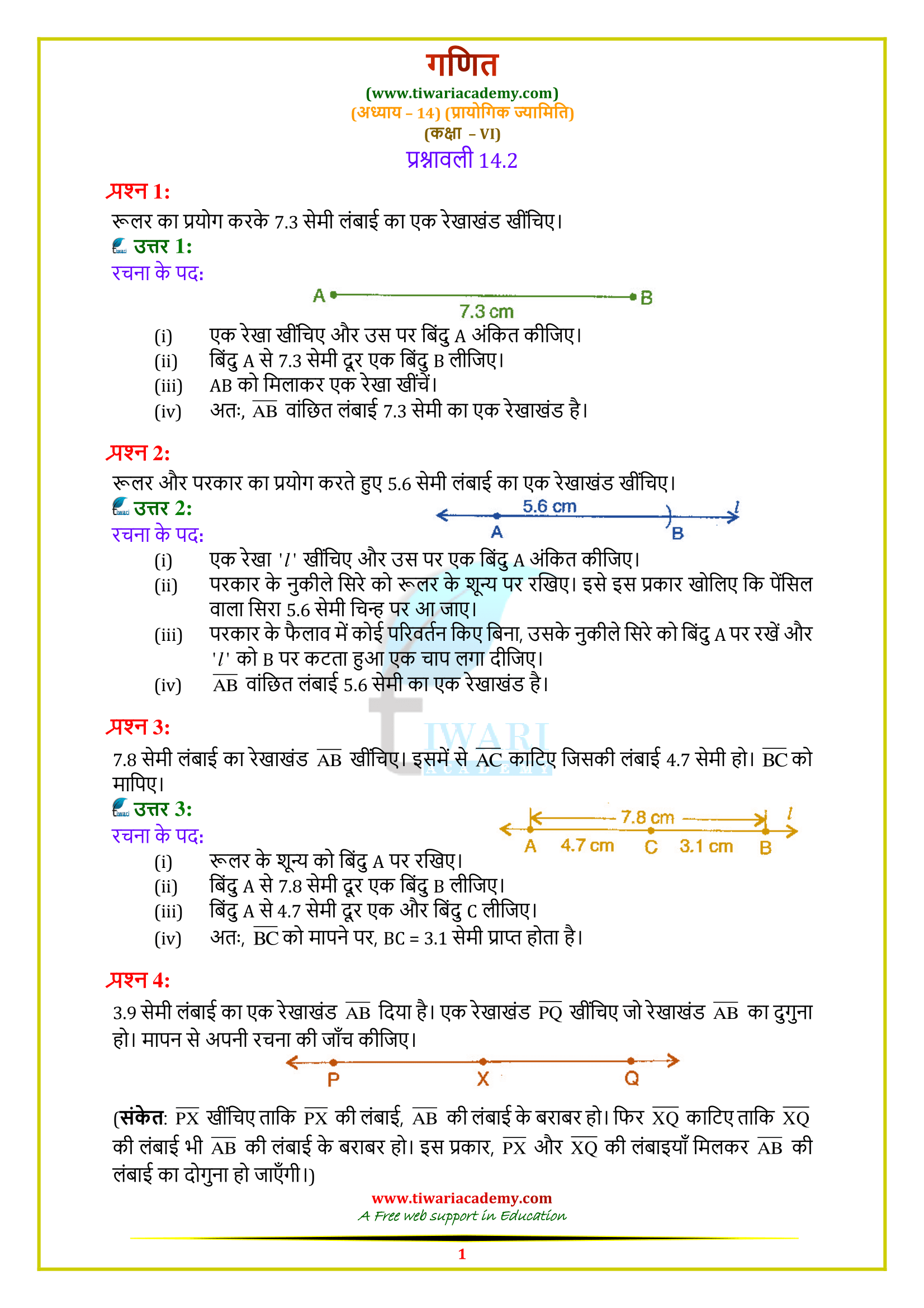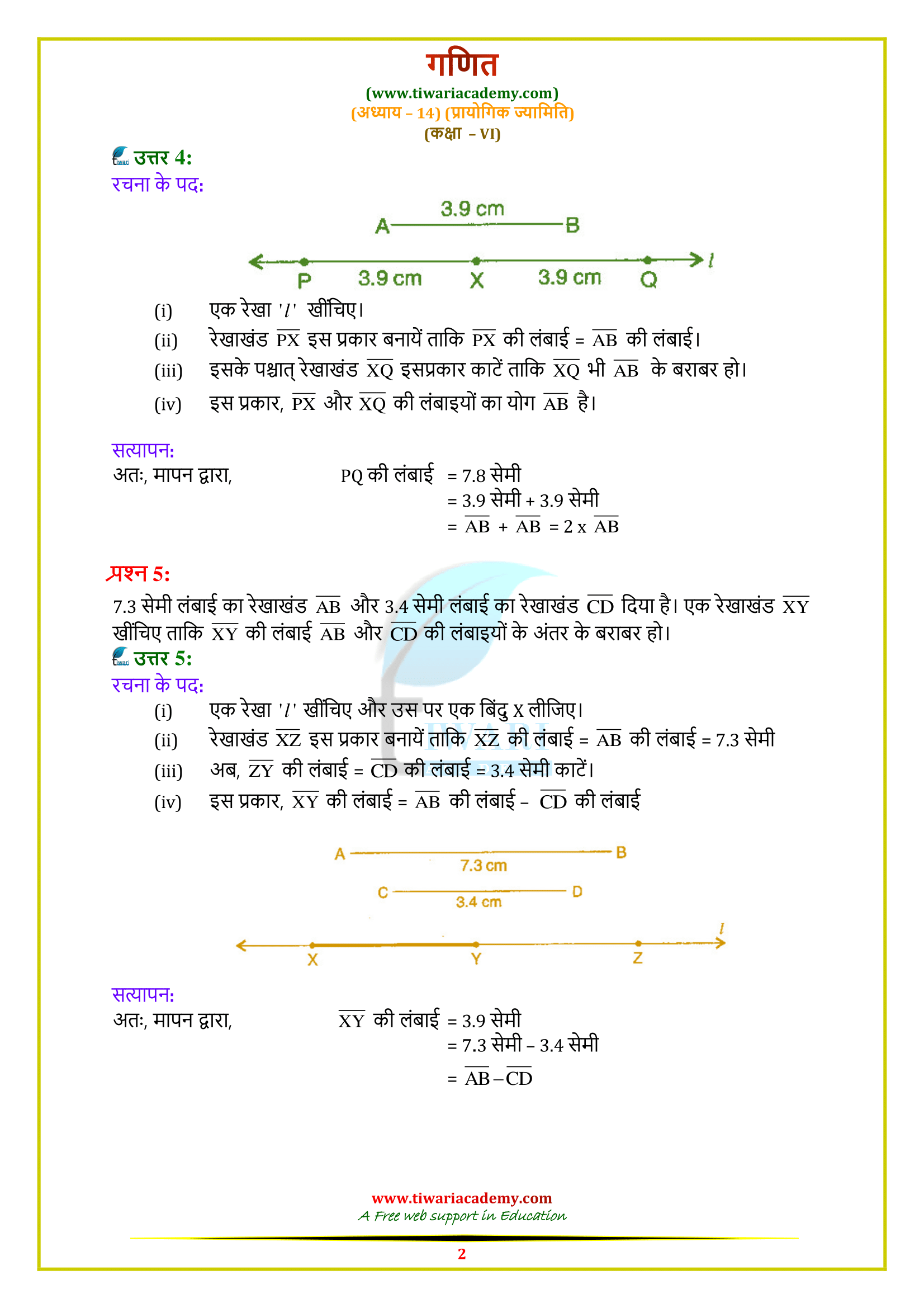NCERT Solutions for Class 6 Maths Chapter 14 Exercise 14.2 Practical Geometry in Hindi and English Medium updated for CBSE and state board new session. Get updated NCERT Solutions for Class 6 Maths, Chapter 14 Exercise 14.2 on Practical Geometry. Available in both Hindi and English at Tiwari Academy, ideal for the new CBSE and state board session.
6th Maths Exercise 14.2 Solutions in Hindi and English Medium
Class 6 Maths Chapter 14 Exercise 14.2 Solution
Class VI Mathematics solution NCERT Ex. 14.2 Practical Geometry updated for CBSE and other state baords free to use online or download in PDF. The step by step explanation of each question is also given in video solution. So students can take help through videos of exercise 14.2 of class 6 math. NCERT (https://ncert.nic.in/) textbook Class 6 Maths ex 14.2 contains the questions based on construction of a line and line segments.
Class 6 Maths Chapter 14 Exercise 14.2 Solution in Videos
Set squares.
There are two triangular shaped instruments called set-squares
n the geometrical box. These are usually made of thin transparent plastic sheet.
In one, the angles are of 90, 45, 45 and in the other, the angles are 30, 60, 90. The set-square in which the angles are of 300, 60 and 90 is called the 30° set-square and the set-square in which the angles are of 900, 450 and 450 is called the 45° set square. Two perpendicular edges in these set-squares are usually graduated, one in centimetres and the other in inches.
Set-squares are used to draw parallel and perpendicular lines. They can also be used to construct specific angles of 30°, 45°, 60° and 90°.
| Class: 6 | Mathematics |
| Chapter: 14 | Exercise: 14.2 |
| Chatper Topic: | Practical Geometry |
| Content: | Text PDF and Videos Solutions |
| Medium: | Hindi and English Medium |
Let us construct an angle of 45° using a set-square:
Step-1: Place 45° set-square on a sheet of paper.
Step-2: Hold the set-square firmly with one hand and with other, draw two rays OA and OB along the edges using a sharp pointed pencil from the vertex of 45° angle of the set-square. The angle so formed is the required 45° angle.
Note: Similar steps can be used to construct an angle of 30° or 60° or 90° by choosing the appropriate set-square.
Perpendicular Lines
Two lines are said to be perpendicular if one of the angles formed by them is a right angle (or 90°). lines PQ and RS are perpendicular to each other at the point O because angle ROQ = 90°.
We write RS Ʇ PQ.
Class 6 Maths Exercise 14.2 Important Questions
Why it is called Set Square?
It could also be that the “set square” normally comes from a “geometry set” (a set of rulers/tools), so it is the “set square” the “square-making tool from the set”.
What is the use of set squares?
A set square or triangle (American English) is an object used in engineering and technical drawing, with the aim of providing a straightedge at a right angle or other particular planar angle to a baseline.
What are the two types of set square?
There are two main types of set square. One has an angle of 450 and the other 300 /600 degree angles. The 450 set square also has a 900 angle. This can be used for drawing vertical lines.
How do you divide a line with a set square?
To divide a line with a set square these are steps:
(i) Choose the work-piece that you want to divide.
(ii) Choose how many sections you want to make.
(iii) Draw a diagonal line above the line being divided.
(iv) Mark out equal points along the diagonal line.
(v) Use a square / 900 angle to draw lines from the points on the diagonal line down to the original work-piece.
Note: Two segments (or rays) are said to be perpendicular if the lines containing them are perpendicular.
Which questions can students expect from exercise 14.2 of 6th standard Maths in the terminal exams?
Exercise 14.2 of 6th standard Maths has five questions. All questions of this exercise are important at their places. But, the most significant questions of this exercise that students can expect in the terminal exams are questions 3, 4, and 5.
Does exercise 14.2 of 6th-grade Maths have any example?
No, exercise 14.2 of 6th-grade Maths doesn’t have any examples. This exercise has only 5 questions and no examples. This exercise is very easy. Only in question, 5 students face a little problem while understanding.
How many hours are required to finish exercise 14.2 of class 6th Maths?
Students require a maximum of 2 hours to finish exercise 14.2 of class 6th Maths because this exercise is very short. Only five questions are there in exercise 14.2 of class 6th Maths. Students can quickly finish this exercise.
What are the main motives of exercise 14.2 of class 6 Maths?
The core motives of exercise 14.2 of class 6th Maths are to teach students the meaning of the line segment and also to teach students how to construct a line segment of a given length.







